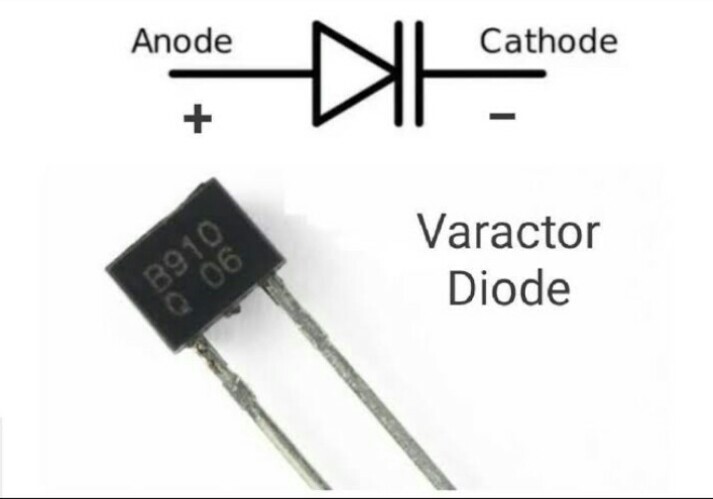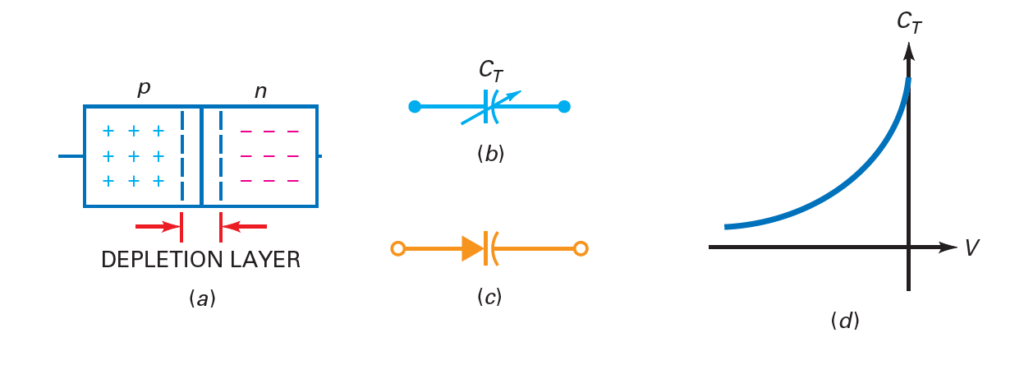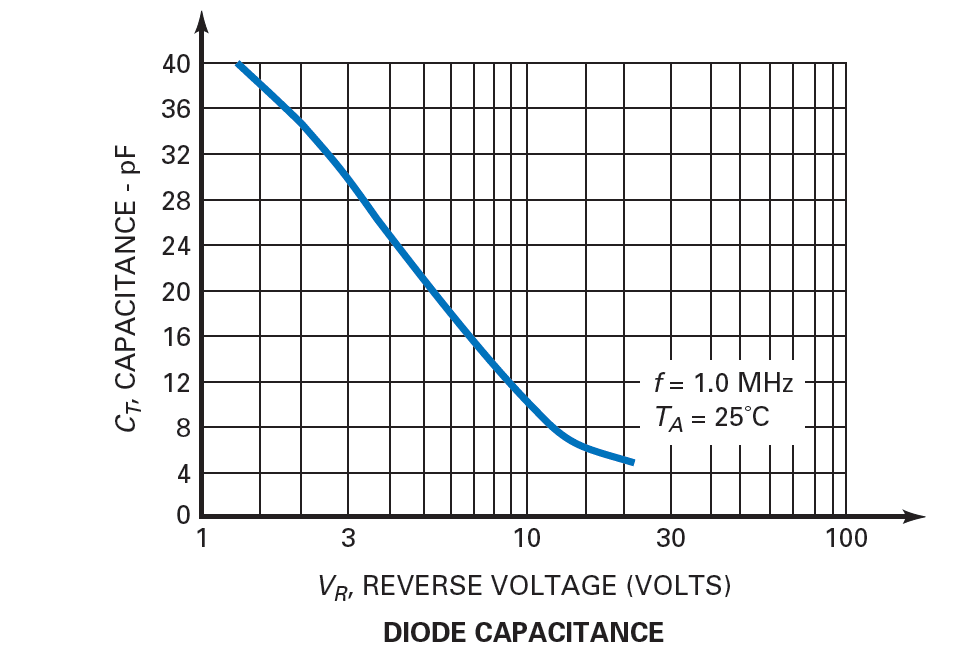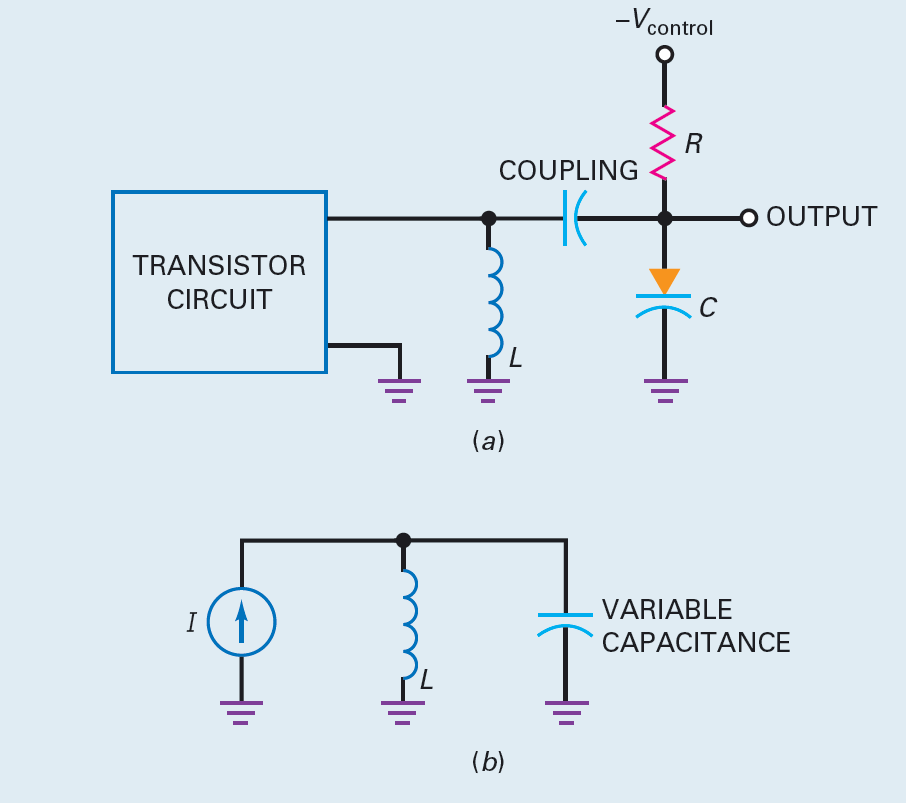
Introduction to Varactor diode
What is the varactor diode and how does it work? The varactor diode is also called voltage variable capacitance diode. Other names for varactor diode are varicap, epicap or tuning diode as it is used in tuning circuits as we will study ahead. It is mostly used in communications equipment and FM receivers etc. It is designed to exploit the inherent capacitance variation characteristics of a reverse-biased p-n junction diode, making it ideal for voltage-controlled tuning, frequency modulation, and voltage-controlled oscillators.

Basic Idea of Varactor diode
As we know that in a general purpose diode the depletion layers exists between p and n type material. This width of the depletion layer increases when the diode is reverse biased. The more reverse voltages will cause the more barrier potential. Hence causing the more wider depletion region. This depletion layer acts as the dielectric while both n and p regions act as the plates of the capacitor. As we know that there is inverse relation between the capacitance and the distance between two plates. So according to the following formula
C=AE/D
the capacitance decreases with the increase in reverse voltages. The ac equivalent circuit (b) shows the property of variable capacitance in reverse bias. Since the depletion region is not much effected in forward biased mode that is why varactor diode is operated in reverse bias mode.
In fig (d) the relation between reverse voltages and the capacitance is shown. It can be noticed that with the increase in reverse voltages, the capacitance is decreasing.
Structure and Construction
Varactor diodes are typically constructed using semiconductor materials such as silicon (Si) or gallium arsenide (GaAs). The basic structure consists of a p-n junction with an intrinsic (i) region. The diode is usually designed to withstand high reverse bias voltages. The doping concentration and thickness of the depletion region determine the capacitance range and voltage sensitivity of the diode.
Use of varactor diode
The varactor diode is connected in parallel with an inductor to form a parallel resonant circuit. These are the circuits that resonate at a single frequency called the resonant frequency. If the reverse biased voltages are changed then this frequency also changes. This principal is used for tuning TV, radios receivers etc.
Characteristics of varactor diode

Since the varactor’s diode capacitance is controlled by controlling the reverse voltages that is why these diodes have replaced mechanical capacitors in many communication circuits. The datasheets provide the tuning ration for reverse voltage range. Tuning range depends on the doping level. For a general purpose diode the tuning ratio is uniform and it is in between 3:1 and 4:1. Such types of diodes have abrupt junction as shown in figure below. While the other diodes have hyperabrupt junction. The tuning ratio increases as we approach the junction. The high level of doping causes narrow depletion region thus increasing the capacitance. Hyperabrupt junctions have tuning ration around 10:1 that is good for tuning AM radio stations.

Parameters of Varactor Diode
- Capacitance: The most significant parameter of a varactor diode is its
capacitance, which varies with the applied voltage. The capacitance is typically measured at a specific voltage, known as the reference voltage.
- Voltage Sensitivity: The voltage sensitivity, also known as the tuning ratio, describes the change in capacitance with respect to the applied voltage. It determines the tuning range of the
- Quality Factor (Q): The quality factor represents the energy losses in the varactor diode due to resistive and dielectric A higher Q factor implies lower losses and better performance.
- Reverse Breakdown Voltage: This parameter defines the maximum reverse voltage that the diode can withstand without experiencing catastrophic
- Frequency Range: Varactor diodes are designed for specific frequency ranges, and their capacitance values are chosen
Applications of Varactor Diode
The following figure shows the application of varactor diode as tuners for resonant circuits.

A transistor is a semiconductor gadget that demonstrations like a current source. In above fig(a) , the semiconductor siphons a fixed number of milliamperes into the full LC tank circuit. A negative dc voltage invert inclinations the varactor. By differing this dc control voltage, we can change the full recurrence of the LC circuit. All things considered, we can utilize the same circuit appeared in Fig. (b). The coupling capacitor acts like a short circuit. An ac current source drives a thunderous LC tank circuit. The varactor demonstrations like variable capacitance, which implies that we can change the resounding recurrence by evolving the dc control voltage. This is the fundamental thought behind the tuning of some radio and TV inputs.
Voltage-Controlled Oscillators (VCOs):
Varactor diodes are widely used in VCOs to tune the output frequency by controlling the
Frequency Modulation (FM) and Phase-Locked Loops (PLLs):
Varactors play a crucial role in FM radios and PLL circuits for frequency tuning and demodulation.
RF Filters and Tunable Matching Networks:
Varactor diodes can be employed in variable capacitors for impedance matching and RF filtering in communication systems.
Voltage-Controlled Filters:
By using varactor diodes in filter circuits, it is possible to create tunable bandpass or notch.
Advantages and Limitations of Varactor Diode
Advantages of Varactor Diode
-
- Compact and lightweight
- Precise and rapid tuning capabilities
- Low power consumption
- Compatibility with integrated circuit (IC) fabrication processes
Limitations of Varactor Diode
-
-
- Limited power handling capability
- Nonlinear behavior at high frequencies
- Voltage-dependent linearity issues
-
Recent Developments in Varactor Diode
Researchers are continuously exploring new materials and device structures to enhance the performance of varactor diodes. For example, the integration of varactors with nanoscale materials and advanced fabrication techniques has shown promise in achieving higher tuning ranges, faster response times, and improved linearity.
| Feature | Varactor Diode | PN Junction Diode | Zener Diode | Schottky Diode |
|---|---|---|---|---|
| Definition | A diode whose capacitance varies with applied reverse bias voltage. | A standard diode allowing current flow in one direction. | A diode designed for reverse breakdown at a specific voltage. | A diode with a metal-semiconductor junction for low forward voltage. |
| Primary Function | Variable capacitance for tuning circuits. | Rectification, switching. | Voltage regulation, overvoltage protection. | High-speed switching, rectification. |
| Construction | P-N junction with variable depletion region. | P-N junction. | Heavily doped P-N junction. | Metal-semiconductor junction. |
| Forward Voltage Drop | Not typically used in forward bias. | ~0.7 V (silicon), ~0.3 V (germanium). | ~0.7 V in forward bias. | ~0.2–0.4 V (lower than PN diode). |
| Reverse Bias Behavior | Capacitance decreases as reverse voltage increases. | Blocks current until breakdown. | Conducts at specific breakdown voltage. | Low reverse breakdown voltage, high leakage. |
| Capacitance | Variable (1–100 pF typical, voltage-dependent). | Fixed, low parasitic capacitance. | Fixed, not designed for capacitance use. | Low parasitic capacitance. |
| Switching Speed | Moderate (used in RF, not ultra-fast). | Moderate (depends on type). | Slow (not designed for fast switching). | Very fast (due to metal-semiconductor junction). |
| Applications | RF tuning, voltage-controlled oscillators (VCOs), phase-locked loops (PLLs), frequency modulators. | Power supplies, signal rectification, logic circuits. | Voltage regulation, surge protection. | High-frequency circuits, power rectification, RF mixers. |
| Breakdown Voltage | Not designed for breakdown; operates in reverse bias safely. | High, avoids breakdown in normal use. | Specific (e.g., 3.3 V to 200 V). | Lower than PN diode, typically 20–100 V. |
| Doping Level | Moderately doped for capacitance variation. | Standard doping. | Heavily doped for sharp breakdown. | Not applicable (metal-semiconductor). |
| Typical Materials | Silicon, gallium arsenide. | Silicon, germanium. | Silicon. | Silicon with metal (e.g., gold, platinum). |
| Temperature Sensitivity | Moderate (capacitance varies with temperature). | Moderate (forward voltage decreases with temp). | Low (stable breakdown voltage). | Low (stable at high frequencies). |
Conclusion
Varactor diodes are vital components in RF and microwave circuits, enabling precise control over frequency tuning and modulation. With their voltage-dependent capacitance characteristics, these diodes
Also read here:
https://eevibes.com/how-tunnel-diode-works/